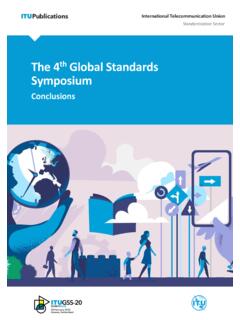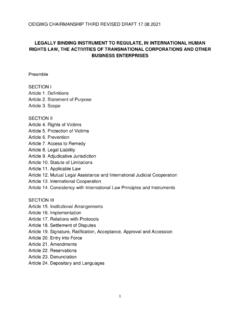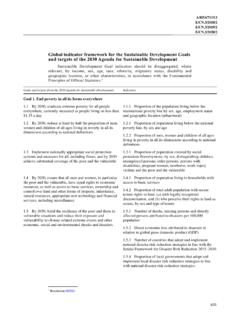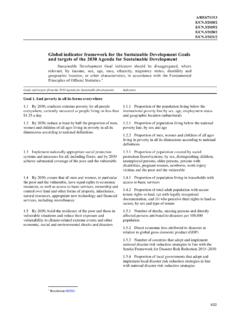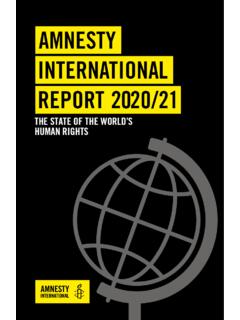Transcription of Person-Centered Thinking, Planning, and Practice: A National ...
1 1 Pers on-Cente re d Think ing, Planning, and Practice : A National Environmental Scan of Definitions and Principles Prepared by the Human Services Research Institute as part of NCAPPS technical assistance November 2019 1 Introduction To guide the technical assistance provided as part of the National Center on Advancing Person-Centered Practices and Systems (NCAPPS), the Human Services Research Institute prepared a National overview of Person-Centered principles across aging and disability systems, including mental health systems. This document was prepared to support one State s effort to create a cross-system definition of Person-Centered practice. Using the common principles of Person-Centered thinking, planning, and practice summarized below, along with a review of State-level standards for Person-Centered practices, the State drafted a definition of Person-Centered practice to be used across its State systems of aging and disability.
2 This document is the first in a series of environmental scans to support NCAPPS technical assistance; it may serve as a useful tool for other States, Tribes, and Territories that are seeking to develop local definitions of Person-Centered thinking, planning, and/or practice based on nationally recognized principles. Forthcoming documents include a scan of Person-Centered approaches and a scan of indicators (or measures) of Person-Centered thinking, planning, and practice. This scan specifically focuses on criteria and definitions of Person-Centered thinking, planning, and practice within human service systems and organizations. To perform the scan, we reviewed articles, policy statements, regulations, and websites of National aging, disability, and mental health organizations. The review of literature focused on articles, reports, websites, and other documents that were frequently cited and that were written by leading experts in these fields.
3 The scan identified several common themes, including choice and self-determination, community acceptance and inclusion, and access to services. Review of Federal laws and policies focused on guidance regarding choice, community, and access to services. The main principles of Person-Centered practices that emerged from the review can be summarized as follows: Focus on the person. The person is at the center of the planning process. The person s desires should be heard, honored, valued and reflected in the services received. People who are important in the person s life should be part of the planning process. Choice and self-determination. People should make choices (with support if needed and wanted) about services and supports as well as decisions regarding their own health, well-being and life goals. Community inclusion.
4 People must have full access to the community and be treated with dignity and respect. Availability of services and supports. People should have access to an array of individualized services that meet their particular needs. 2 There were other key issues that emerged in the review. Although they don t necessarily define person-centeredness, they are important characteristics of a Person-Centered system. Information. Information should be provided in a clear and meaningful way in order for people to understand options and make informed decisions. Coordinated supports. A few resources discuss the need for providers to work together to deliver services, and the importance of having cohesion and continuity with supports. Positive expectations. This theme comes mainly from the mental health field and stems from the belief that recovery can be a reality.
5 In other fields, the assumption that improvement and growth are possible is important for Person-Centered practices. The resources presented here are organized first by primary population focus, starting with those that focus on more than one population, followed by those that focus on aging, those that focus on intellectual and developmental disability (IDD), and those that focus on mental health. Within these subsections, resources are listed alphabetically by Scan of Person-Centered Principles 3 Environmental Scan Resources with Multiple Populations of Focus No Wrong Door: Person- and Family-Centered Practices in Long-Term Services and Supports AARP | 2017 Individualization is at the heart of person- and family-centered practice. It represents a radical shift from simply providing someone with a list of services.
6 Strategies such as partnering with families to listen to values and preferences, discussing pros and cons of various options, and following up with people to make sure information was helpful are some promising ways that States are implementing this individualized support. Additional criteria: Person- and family-centered practice requires an interactive process directed by individuals and family members to support decision making about LTSS. An individual trained in person- and family-centered practices and support options facilitates the development of a plan that accounts for a person s and family s strengths, preferences, needs, and values. Source: ~/media/Microsite/Files/2017 ACL Mission Statement Administration for Community Living | 2014 The Administration for Community Living (ACL) believes that every person has the right to make choices and control the decisions in their lives.
7 This right to self-determination includes decisions about where to live, decisions about work, and all the other daily decisions most adults make without a second thought. older adults and people with disabilities are unique individuals, and the help they may need is unique as well. These programs focus on helping ensure that the preferences and the needs of older adults and people with disabilities are at the center of the system of services and supports that enable them to live the lives they want to live. Source: Environmental Scan Report 4 Person Centered Thinking, Planning, and Practice: The Federal Policy Context Administration for Community Living | 2016 Person-Centered practice is the alignment of service resources that give people access to the full benefits of community living and help them achieve individual goals.
8 Source: Centers for Medicare and Medicaid Services | 2014 The Medicaid Home and Community-Based Services Final Rule - CFR 42 (c)(1) and CFR 42 (c)(2) defines requirements for Person-Centered planning for people living in HCBS settings under 1915(c) waivers and 1915(i) State Plan authorities. Source: Affordable Care Act 2010 The Affordable Care Act contains a number of provisions that promote Person-Centered approaches. These provisions include: Community first living setting; availability of services to meet individual need; Person-Centered services and supports based on functional need and agreed by or on behalf of individual; individual choice and control; coordinated delivery of services and supports. Source: Americans with Disabilities Act 1990 The Americans with Disabilities Act prohibits discrimination against individuals with disabilities in all areas of public life, including jobs, schools, transportation, and all public and private places that are open to the general public.
9 The Act requires reasonable accommodations to be made for people with disabilities. Source: Environmental Scan Report 5 What Patient Centered Should Mean: Confessions of an Extremist Berwick, Donald | 2009 The experience (to the extent that the informed patient desires it) of transparency, individualization, recognition, respect, dignity and choice in all matters, without exception, related to one s person, circumstances, and relationships in health care. Source: Person-Centered Planning and Self-Direction: HHS Issues New Guidance on Implementing Section 2402(a) of the Affordable Care Act 2014 | HHS Person-Centered planning is a process directed by the person with long-term service and support (LTSS) needs. The Person-Centered planning approach identifies the person s strengths, goals, preferences, needs (medical and HCBS), and desired outcomes.
10 The role of staff, family, and other team members is to enable and assist the person to identify and access a unique mix of paid and unpaid services to meet their needs, and to provide support during planning and implementation. Additional criteria: As a first step in implementing Section 2402(a), the Secretary issued guidance on Person-Centered planning and self-direction. This information will help States, agencies, providers, people with disabilities, families, and other stakeholders to encourage the development of systems and services that are Person-Centered and maximize self-direction. That, in turn, will empower people who receive LTSS to reach their goals and achieve a better quality of life. Source: What Is Person-Centred Care and Why Is It Important? Health Innovation Network, South London There are many different aspects of person-centred care, including: respecting people s values and putting people at the centre of care; taking into account people s preferences and expressed needs; coordinating and integrating care; working together to make sure there is good communication, information, and education; making sure people are physically comfortable and safe; emotional support; involving family and friends; making sure there is continuity between and within services; and making sure people have access to appropriate care when they need it.

